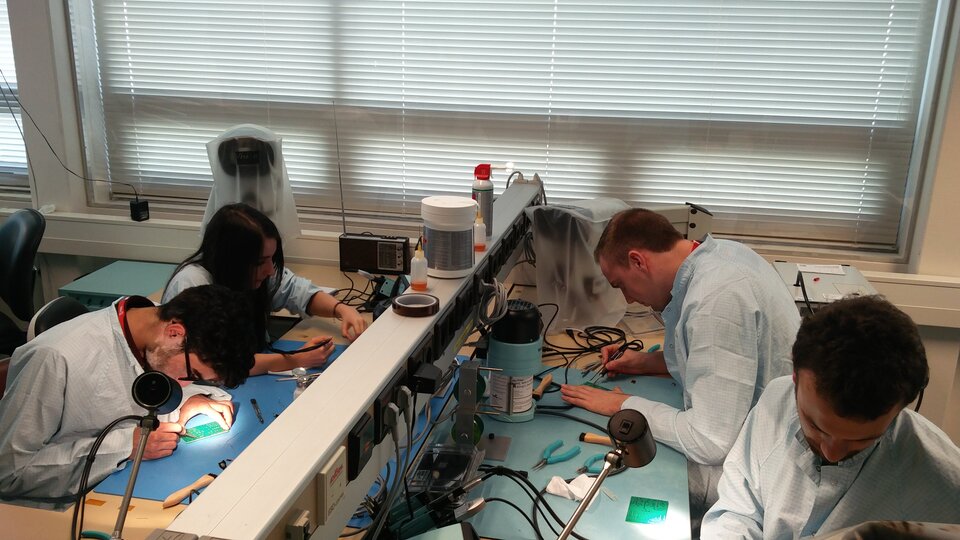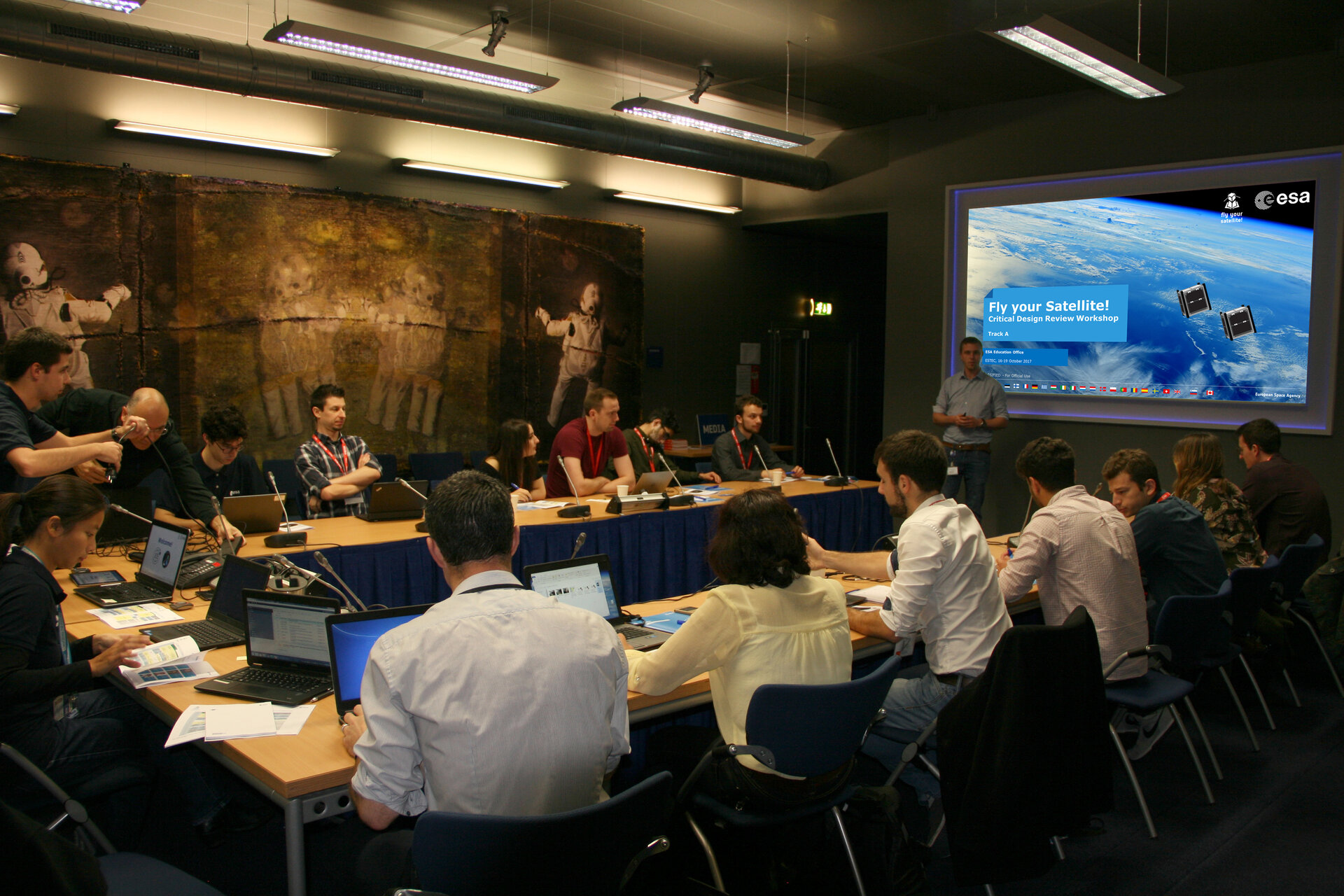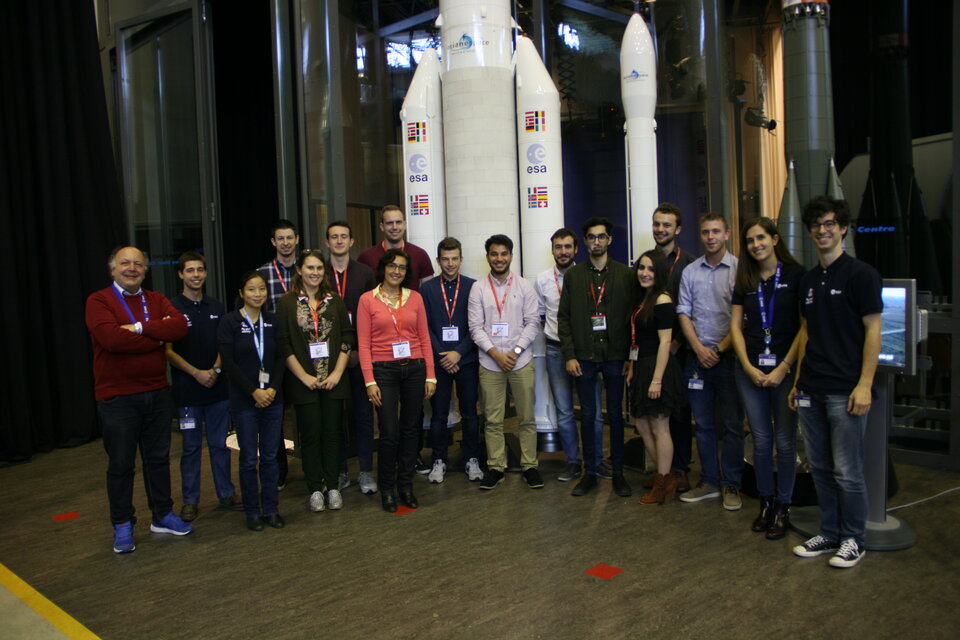CubeSat teams commence critical review of their satellite designs
Two advanced teams participating in the second edition of the “Fly Your Satellite!” programme have just spent four days at ESTEC, ESA’s technical heart in the Netherlands. Their mission: to attend the Critical Design Review (CDR) workshop.
One of the teams was CELESTA, from the University of Montpellier (FR). Their CubeSat will allow students to perform in-orbit testing of a Radiation Monitor, using it to record Single Event Latch-up and Single Event Upset rates to observe particle flux. The other team was UoS3, from the University of Southampton (UK). Their CubeSat will enable students to validate orbital decay models in order to support research on space debris by acquiring position and attitude data through a GNSS receiver and on-board sensors. As a secondary mission objective UoS3 will also mount an on-board camera to capture images of Europe from orbit.

The Critical Design Review is a fundamental step in the development of a satellite in order to confirm the overall quality of the CubeSat design. After the Selection Workshop earlier this year, the two teams have been working hard to finalise the design of their CubeSat and to prepare the comprehensive data package required for the CDR process. The design documentation has been carefully evaluated by ESA specialists from a range of technical areas, and during this four-day workshop the students discussed review discrepancies and agreed on corrective actions with those specialists.
When all the major issues have been closed-out successfully, the design of the CubeSats will be declared ready to proceed to the next phase of the CubeSat project: finalising the integration and testing their spacecraft in ambient conditions to demonstrate functionality.
In addition to the meetings with ESA specialists, the student teams presented the current status of their projects, design changes since the selection workshop, and the technical difficulties that were being tackled.
Because of the training nature of the event, the students also attended lectures that will help them to move through the system level testing in ambient conditions. These lectures covered different topics, such as how to identify the root causes of faults or problems in spacecraft; electromagnetic testing of spacecraft; how to write robust test procedures; how to test the on-board software; and a hands-on soldering workshop.
For the other four teams in the current edition of “Fly Your Satellite!”, the specialists have just kicked-off the review of the CDR data packages, to be followed by another workshop in the coming months. We wish the very best of luck to all teams during this important step!



